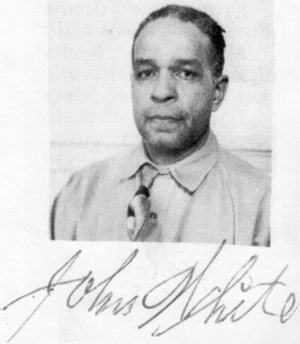The Museum at Central School in Kalispell is dedicated to preserving Northwest Montana’s rich history, often portrayed through its well-known exhibits. But for the last 12 years, the dawning of the New Year has meant it’s time for a different kind of historical perspective.
Each January and February, starting in 2002, local experts and storytellers gather at the museum every other Sunday to give presentations on various areas of historical note during the annual John White Speaker Series.
“Our mission is all about preserving and presenting Northwest Montana history,” museum director Gil Jordan said. “This is just another way we’ve found to disseminate this history in a different form than just exhibits.”
Kicking off the 12th annual speaker series on Jan. 12 will be a panel of long-time Flathead Valley residents in the “Memories of Flathead History,” presentation. It’s the first time the series has included a multiple-speaker event, Jordan said.
The panel will include Sylvia Murphy, Bob O’Neil, Rand Robbin, Peter Larson and Sheryl Lautherback, who will all discuss their history in the Flathead and the memories they’ve earned along the way.
On Jan. 26, local author and avid outdoorsman Blake Passmore will give his presentation, “Climb Glacier Park.” Passmore has written three guidebooks on the climbing opportunities in Glacier National Park, and will talk about those books as well as his experiences and adventures in the Crown of the Continent.
The third presentation in the series, “A Black Homesteader’s Struggle,” will take place on Feb. 9. Poet and storyteller Philip Burgess will use his wordsmithing skills to create a picture of what it was like for an African-American family settling in the Missouri River Valley, where they sought refuge from the violent racism of the post-Civil War south.
And on Feb. 23, the final presentation in the series will be “Sons of Sheriffs,” an apt name for a discussion featuring three sons of former Flathead County sheriffs, including retired attorney Ty Robertson, 96, whose father, Cal Robinson Sr. was sheriff in the 1930s and 1940s; Pat Walsh, whose father Dick Walsh took the sheriff job after Robinson in 1947; and Larry Wilson, whose father Ross Wilson followed Walsh and served as sheriff in the 1960s.
Each presentation begins at 2:30 p.m., and there will be a question and answer portion following each speaker. After that, Jordan said there would be a reception with drinks and snacks, and another chance to discuss the speaker’s subject with them.
It’s all quite accessible, Jordan said, and gives valley residents a chance to get out and socialize without facing down the winter elements.
“It’s kind of quiet in the winter unless you’re an outdoors enthusiast,” he said. “This is a real nice way for people to get out be entertained and learn something about Montana history and culture.”
Even the name of John White Speaker Series harkens back to the museum’s history. John White was the son of a Texas slave, who came to the Flathead Valley as a young man and graduated from Flathead High School in 1922.
After high school, White took over for his father as the Central School’s custodian and bell-ringer, where he would work for 30 years.
 |
|
John White | Photo courtesy of Central School Museum |
“He was loved by virtually everyone,” Jordan said.
One of the stories about White involved his duty as the bell-ringer for the school. He’d keep an eye out the window on the kids making their way to class below, Jordan said, and would hold off on ringing the tardy bell if the students looked like they were really hustling to class.
White’s family was also one of the first to get a television set in the 1950s, Jordan said, and would host the neighborhood kids to watch TV shows.
“He was really a pleasant nice wonderful man and so we honor him by naming this series after him,” Jordan said.
Tickets to individual speaker presentations are $9 for the public and $6 for museum members; entire series passes are $30 for the public, and $20 for members. Purchases can be made at the museum, by calling 406-756-8381, or at the door.
Most of the shows have solid audiences, usually with 40 or 50 people, Jordan said, but some sellout at the maximum of 100 people. Each ticket purchase goes toward funding the museum, he said.
“We’ve done about 44 of these presentations over the years, we go all over the place with subject matter,” Jordan said. “I think it’ll be fun.”